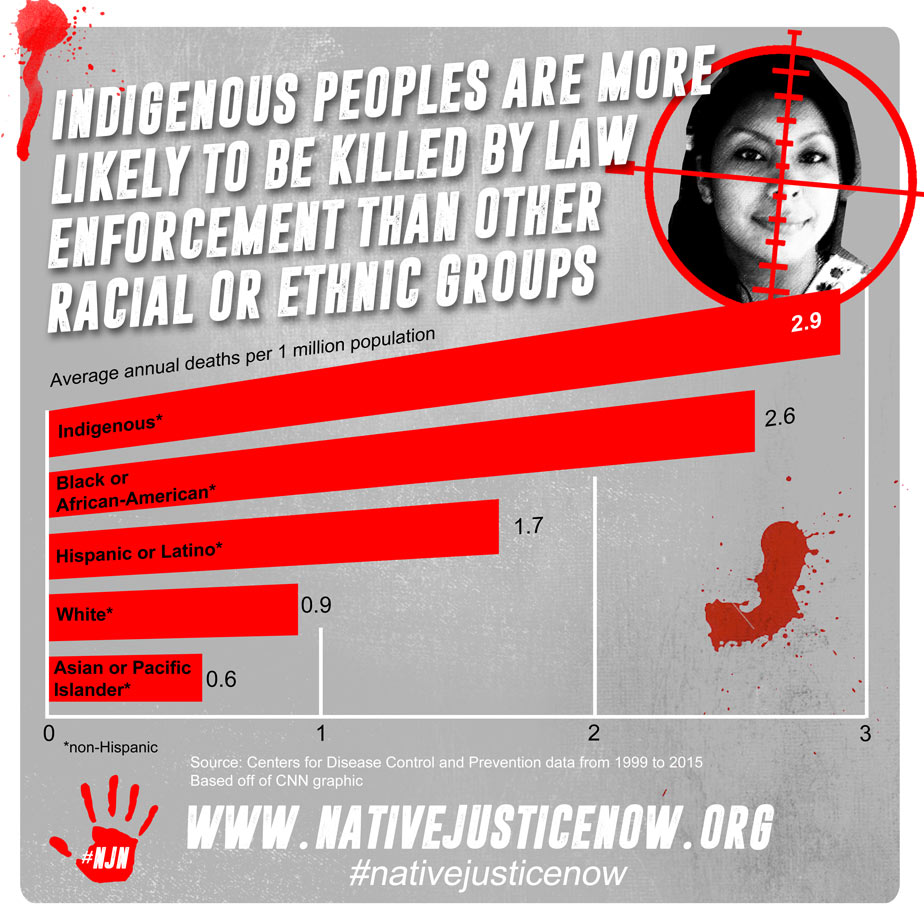According Brave New Films, Black, Latino, & Native defendants are 2x more likely to be detained due to not being able to pay cash bail.
On state charges: last fall, the Pretrial Justice Institute released a report where they scored each state on their pretrial justice practices (pretrial detention rate, use of pretrial risk assessment, reliance on payment as a condition for release before trial). The following states have large indigenous populations and a failing grade (D or F): Alaska, California, Florida, Hawaii, Idaho, Montana, Nebraska, New Mexico, North Dakota, Oklahoma. Collectively, those states make up over a third of the states with a failing grade. Natives are overrepresented in all of these states’ prisons. Some more information on these states:
- Alaska: Alaska Natives comprise 17% of the state population, and approx 37% of the state prison inmates (source). That number rises to almost 50% if you include Native Hawaiians (source).
- California: This 2013 report on CDC inmate demographics doesn’t even mention Natives, but does say that 6.3% of their inmates are “other” (not Black, Hispanic, or white). In contrast, this source says Natives make up 19% of the state’s prison population. Natives comprise about 2% of California’s state population.
- Florida: Natives are about 1.4% of Florida’s population, and their website also does not mention Native inmates. 5.7% of their population is “other” (not Black or white).
- Hawaii: AI/AN & Native Hawaiians combined are about 10.5% of the state population, and yet comprise 55% of the state’s prison population.
- Idaho: Natives are 1.4% of the state population, but make up 26% of the state prison population (source)
- Montana: Native people make up about 8% of the state population, but approximately a third of Montana’s prison inmates (source). Montana also has the highest number of American Indian youth in federal detention. There is a great report on the school-to-prison pipeline on Montana reservations available here.
- Nebraska: Natives make up 1% of the state population, but a third of the state’s prison population (source).
- New Mexico: Natives make up about 10% of the state population, and 20% of the state’s prison population (source).
- North Dakota: Natives make up about 5.5% of the state population, and 40% of the state’s prison population (source).
- Oklahoma: Natives make up about 6% of the state population, and 14% of the state’s prison population (source).
On federal charges: it’s also notable that the federal protocols for pretrial release can be much stricter than that of individual states, and Native people are vastly overrepresented in federal detention, due to Indian Country being federal jurisdiction. This means Native people are more likely to be held without bail, and are less likely to be able to use commercial bonds. According to the US Sentencing Commission, the number of Native people in federal detention increased by 27% from 2010 to 2015. Federal parole procedures are also much stricter than most state practices–in other words, Native people are more likely to be needlessly detained pretrial, and if found guilty, more likely to serve longer sentences.
On tribal courts: According to this report from BJS, the number of tribal jails has increased from 68 to 80 (between 2004 to 2016). From 2000 to 2016, the number of inmates in tribal jails who were pretrial increased from 39% to 45%. This guide for developing tribal codes for pretrial release decision making has a wealth of information, including sample tribal codes. Some of the stats from the report:
- In the most recent survey, 13 of 68 tribal jails were operating at over 150 percent capacity at their peak, several of them at over 200 or 300 percent of capacity
- Thirteen tribal jails were under court order or consent decree to limit their populations
- At mid-year 2004, 42 percent of all inmates in tribal jails were awaiting adjudication of their charges – most of them on misdemeanor offenses
- Some tribes have adopted bail schedules that vary based on the offense–the Nisqually tribe is cited as an example, as they don’t allow anyone booked in on domestic violence charges to post bail in the first 24 hours (the code describes it as a “cooling off period”). The Nez Perce also has pretrial release procedures for DV cases written into their codes (available pg 22), which take into consideration safety measures for victims.
- Page 17 of the report discusses varying limitations on cash bail amounts–Tulalip and Salish & Kootenai are cited as examples of tribes that define “reasonable bail,” and six other tribes are listed with some concrete limitations. It also discusses which tribes have right to bail written into their codes, and how tribes have interpreted the Indian Civil Rights Act’s stipulation prohibiting excessive bail.
- The White Earth Nation has a stipulation in their codes that requires continuous assessment of the pretrial detainee population in their jail, to prevent unnecessary detention (found on pg 41).
The St Regis Mohawk implemented bail reform procedures with the neighboring off-rez town, to account for the fact that Native defendants can’t use commercial bonds (you can’t use land on reservations as collateral). There’s some slides on that project available here.


